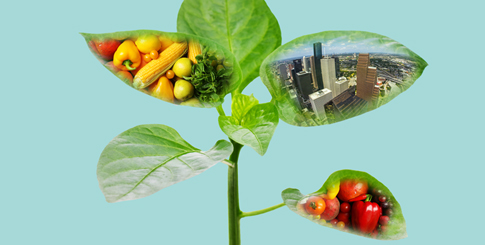Before the devastating floods, there were cooler than usual temperatures in parts of the state, affecting everything from watermelon and grapefruit to strawberries and oranges. At Ramos Produce, the chilly weather meant demand for watermelons was low and planting was delayed.
“The level of crop availability has been variable,” says Fletcher, “if you’re only getting a percentage of what you would normally buy, then you have to buy on the open market and that has a financial impact.” Despite purchasing product from California, Arizona, Idaho, and Washington state, he says, “El Niño has done wonders for the water table, but it affected plantings.” And less product means costs go up, even if the quality isn’t quite top-notch.
On the other hand, a bumper crop—due to flawless weather in some growing areas—can mean problems of a different type. “Good weather is kind of a handcuff,” acknowledges Scott Blanchard, head of Latin grower relations at Tomato Management Corp. When there’s too much supply, he notes, the resulting glut of product can also affect both quality and price.
There are solutions to variable supply: contracts. Erenwert says Brothers Produce has secured more grower-direct contracts, due to weather and market volatility. “With our volume, getting rid of the middleman here and there adds up. We’re cutting more contracts at the growing level and basically investing in the dirt. This allows us to compete in the market more effectively and without product shortages.”
For brokers like Armendariz, storms on Mexico’s west coast did affect his suppliers to an extent. “It has been a down year, compared to past years,” he admits, noting that the volume coming out of Arizona hasn’t kicked off as expected. “Normally, we struggle to find trucks to load our product, but we’ve had independents calling us. That means there’s not enough product.”
Other Hazards & Headaches
Weather isn’t the only headache. As potential hazards, pests and diseases are often waiting in the wings. Fletcher isn’t as concerned about “normal” pests like epidural peel or whitefly. Instead, his concern is for pathogens like salmonella or listeria, which are a bigger worry for processors. “We’re more susceptible and have to go through extra steps to clean the product and keep the cold chain intact,” he says.
Food safety continues to loom large across the industry. “We talk about it a lot and do everything we can possibly do,” Fletcher says. “Look at what happened with Chipotle—there’s always a risk.”
Concern and awareness have reached such levels that Armendariz has started asking his growers and shippers to show him their food safety audits. His own customers have tightened food safety protocols and, in turn, are asking about it. “The melon and lettuce outbreaks a few years ago really got people’s attention,” he notes. “So they’re requesting our documents. They want to be sure the food is safe.”
Ramos Produce requires all of its growers and shippers to have third-party certification. “In the last three years, the major chain stores won’t buy from you unless you can show certification or traceability,” Ramos says. “It’s really the new normal.”
Final Thoughts
If the boom of recent years is any indication, Houston’s produce industry can look forward to continued growth and a terminal market ripe with opportunity. “We’re 99 percent occupied now,” Biondillo says. “Whether we’ll be able to accommodate expanding tenants, I don’t know. We have to stay ahead of companies that are growing.”
Images: Africa Studio/DenisNata/Jorg Hackemann/Shutterstock.com



